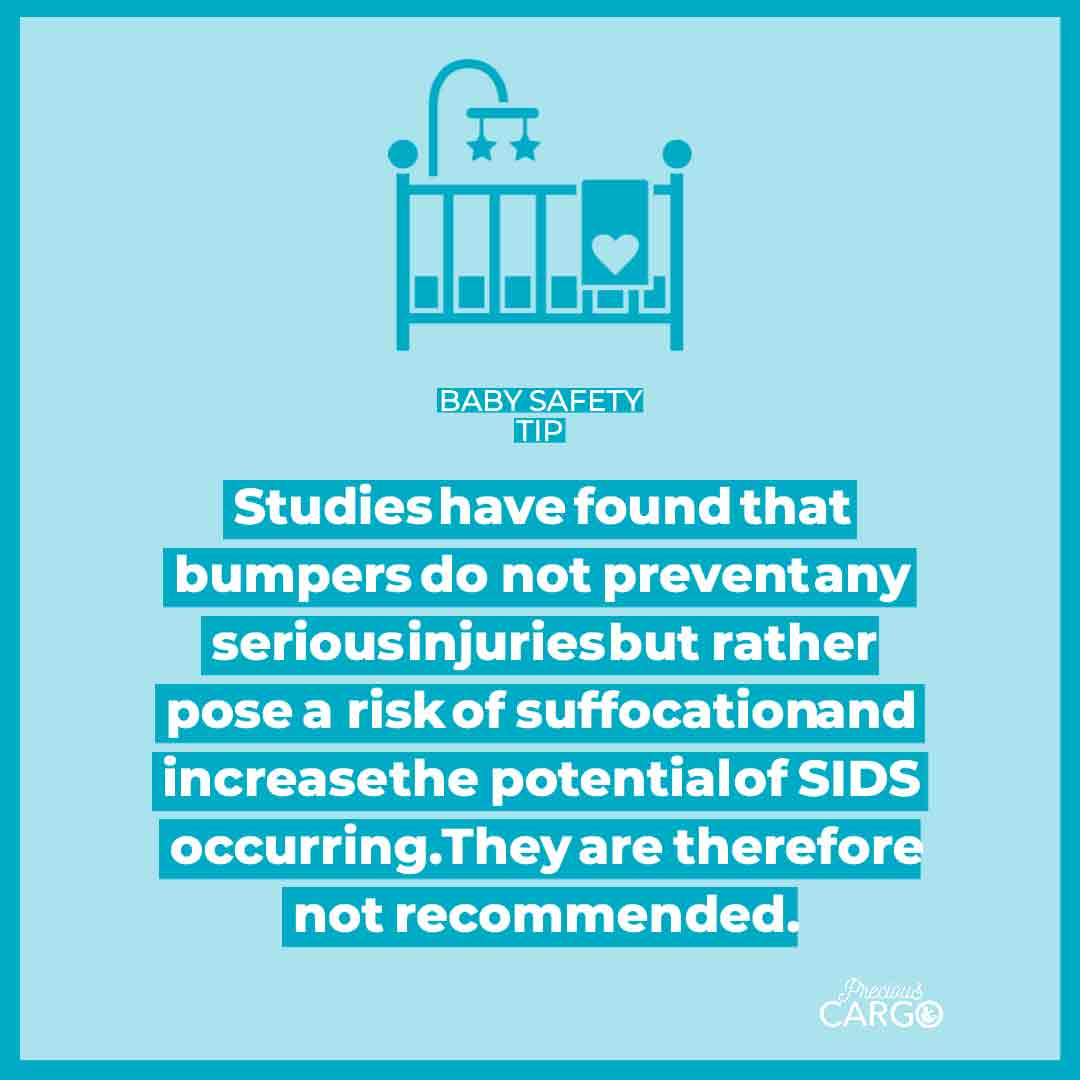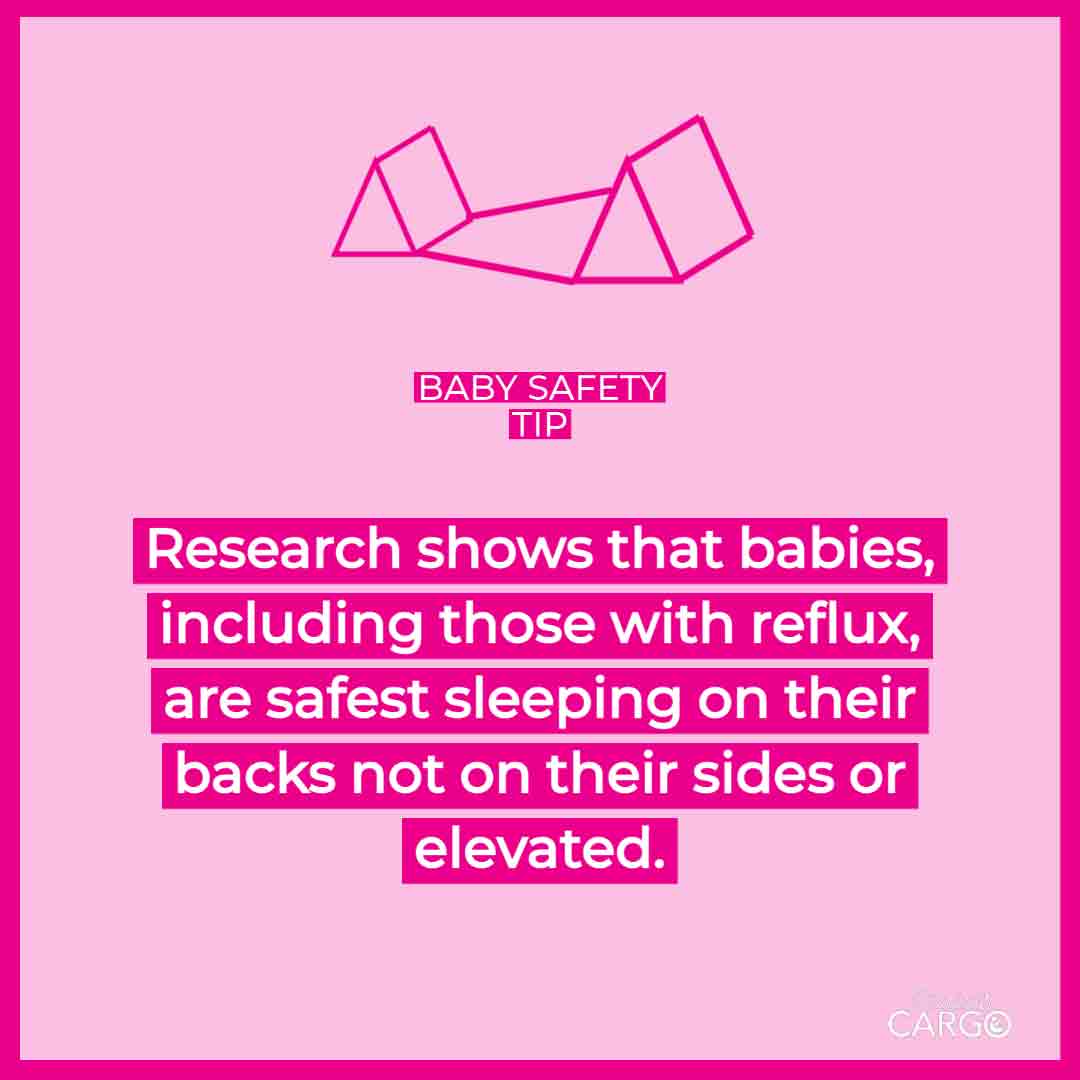Choosing the bedding for your baby’s cot and the decor for the nursery is so exciting as you prepare for your newest family member's arrival. Deciphering what is safe and a necessity versus what is a luxury or possibly unsafe can leave you confused. While the choice of bedding is often used to express the nursery theme, it is important that the safety of each of the elements used, be assessed.
There is conflicting opinion regarding Safe Sleep practice for babies. However, the evidence put forward by the American Association of Paediatrics (AAP) indicates that the safest place for your baby to sleep is on their own sleep surface, in the same room as you, for at least the first six months.
The safest way for your baby to sleep is flat on their back on a firm mattress with no loose items in the cot. This includes things such as duvets, pillows, blankets, cot bumpers, mosquito nets and stuffed animals. All of these items pose a potential risk for causing suffocation, entanglement and strangulation. Keeping the cot empty ensures that your baby cannot accidentally roll into something or pull something over their face.
What should I consider when looking for a cot mattress??
Make sure your baby’s mattress is firm and in good condition and that there are no dents or creases in the mattress when it is placed in the cot. It should be the correct size for your cot, and fit it properly. An undersized mattress will leave a gap between the cot or bassinet, where a baby’s head can get stuck, potentially causing suffocation. An oversized mattress can causes ridges that babies can suffocate in. To check the fit of a cot mattress, push it to one corner. There should be no more than a 4cm gap between it and the cot. If you can fit more than two fingers between the mattress and the cot, the mattress is too small. The firmer the mattress, the safer.
Read our blog articles on What makes a cot mattress safe and Safety standards of cots and mattresses

What should I consider when looking for a cot sheet?
The most important aspect when selecting a cot sheet is that it fits the mattress tightly, almost as if it was a second skin. The best sheet to achieve this with is a fitted sheet as it has elastic all the way around which helps it tuck perfectly around the mattress and has a low chance of coming loose. Using a flat sheet leaves a potential risk of your baby getting entangled should it come loose. Once you have placed the sheet on the mattress, check to make sure that there aren’t any loose threads which could become a hazard.
Another aspect to consider is the type of fabric used. The Lullaby Trust recommends using a waterproof fitted sheet. This will help keep the mattress clean and dry, as the cover can be wiped down.
A fitted sheet which is 100% cotton is ideal as the fibres used are breathable and will keep your baby cool in summer and warm in winter. In addition, 100% cotton sheets are hypoallergenic. Alternatively you can make use of a budget friendly option such as polyester. These sheets are less likely to shrink once washed, however they are not as durable as 100% cotton and tend to be hot when temperatures get higher. It is often recommended that you do a trial run of washing the sheets at home to ensure that they still fit snugly around the mattress and have not stretched or shrunk.

is it safe to use a duvet for my baby?
It is strongly advised by experts that you do not place a duvet in your baby's cot. This is especially true for babies under the age of one. Duvets pose a suffocation risk because babies do not have sufficient muscle strength and coordination to move the duvet off their face if it were to accidentally be pulled over their heads. They are also not able to regulate their own body temperatures yet and so run the risk of overheating.

IS it safe for my baby to sleep with a blanket
The use of a blanket in a baby’s cot should be avoided for babies under twelve months of age. This recommendation comes from the American Academy of Paediatrics (AAP) and is based on data used to reduce the risk of SIDS. Certain precautions and guidelines should still be followed once your child is older than 1 year to have a blanket in their bed. The size of the blanket as well as the thickness, the type of fabric and if it has any type of edging are important aspects to consider when choosing an appropriate blanket.
The use of a blanket in a cot should not be confused with the use of a swaddle or sleep sack. Approved swaddles and sleep sacks are the recommended way of keeping your baby warm, without the risk of loose blankets. It is suggested that swaddling only be stopped when your baby is around 2 months old or shows signs of wanting to roll. Thereafter, your baby can transition into a sleep sack
is it safe for my baby to sleep with a pillow?

The AAP guidelines indicate that a pillow should not be placed in your baby's cot before the age of two. One of the risks associated with allowing your baby to use a pillow is that it can lead to suffocation as their fragile and heavy head would likely sink into the pillow. Using a pillow can also place strain on your baby’s neck as most pillows are not flat and your infant will be spending a significant amount of time in that position.
When the time comes for a pillow to be introduced, it is important that you choose a pillow which is smaller than a standard adult pillow. The ErgoPouch toddler pillow is perfect for this transition. The general recommendation is that a pillow only be introduced when your child moves into a regular bed, which should only be between 2 to 3 years of age.
Are cot bumpers safe in my baby's cot?
While the initial reasoning behind using a cot bumper was to prevent babies from hitting their heads on the cot, it has since been proven over the years to be more dangerous rather than helpful.
Studies have found that bumpers do not prevent any serious injuries, other than a nasty bruise, but rather pose a risk of suffocation and increase the potential of SIDS occurring. Your baby’s face may get pressed against the bumper and because they are not yet strong enough, they are not able to move themselves into a safer position.
The ties used on cot bumpers leave the possibility of your baby becoming entangled in them or potentially being strangled.
In 2011, the AAP published guidelines that indicated cot bumpers should never be used as the risks outweigh any possible benefits. In an attempt to improve the safety of cot bumpers, manufacturers introduced bumpers which were breathable and made out of mesh. Despite this, the AAP still recommends that cot bumpers should not be used even if they are made from a more breathable fabric.

Is it safe to put stuffed animals in my baby's cot?
The AAP have stated that stuffed animals or toys are also classified in the hazardous group and are not recommended in a cot. These toys can increase the risk of SIDS as well as lead to suffocation or strangulation. Parents often want to provide their baby with some type of comforter or soother whilst they are sleeping. Ideally this should only occur when your baby is older than 3 months and should be carried out with caution. When choosing a comforter, it is important to consider the weight and material that it is made out of. Items with small parts such as buttons or eyes should be avoided as they pose a choking risk. An ideal soother for babies should be small and lightweight so that your baby is able to move or swipe it away should it happen to fall on their face. A clever tip when choosing a soother or toy is to look at the age stated on the packaging.

Are sleep positioners safe for babies?
Infant sleep positioners are marketed as a safety device which prevents your baby from rolling onto their side or tummy whilst they are asleep.
These positioners do not conform to the recommended safe sleeping guidelines and have been the cause of numerous infant deaths. These incidents occurred either because the baby’s face was pushed against the side of the positioner or because the infant rolled and got stuck between the sleep positioner and the side of the crib. If your infant was to get stuck, they may find themselves in a position which can obstruct their airway and which they are not able to get out of on their own.
In addition to sleep positioners, it is also advised that any home made forms of positioners such as nursing cushions, baby pods, rolled blankets or any other support device are not used or placed in your baby’s cot as they pose the same risks. Read our blog article on The safest sleeping positions for your baby by age.

In a world where there are hundreds of sleep products available, it is important to remember the principle of bare is best. The safest way for your baby to sleep is flat on their back on a firm mattress with no loose items in the cot.
REFERENCES:
https://pediatrics.aappublications.org/content/138/5/e20162938
https://www.verywellfamily.com/baby-bedding-avoiding-the-dangers-284446
https://us.bsensible.com/blogs/news/what-to-consider-when-shopping-for-your-baby-s-crib-sheets
https://us.bsensible.com/blogs/news/which-type-of-crib-sheet-is-best-for-your-newborn
https://www.babysleepsite.com/safety/what-age-can-my-baby-sleep-with-a-stuffed-animal/
https://www.healthline.com/health/baby/when-can-baby-sleep-with-blanket#takeaway https://www.healthline.com/health/parenting/crib-bumper-safety#Are-breathable-bumpers-better?-
https://www.bestproducts.com/parenting/baby/g2972/safe-baby-crib-bumper-mesh-liners/
https://www.thehealthsite.com/parenting/5-reasons-your-infant-doesnt-need-a-pillow-251521/
https://www.which.co.uk/reviews/cot-mattresses/article/baby-bedding-safety-adNyB4h5WC89 - Which?
https://www.lullabytrust.org.uk/safer-sleep-advice/mattresses-and-bedding/


